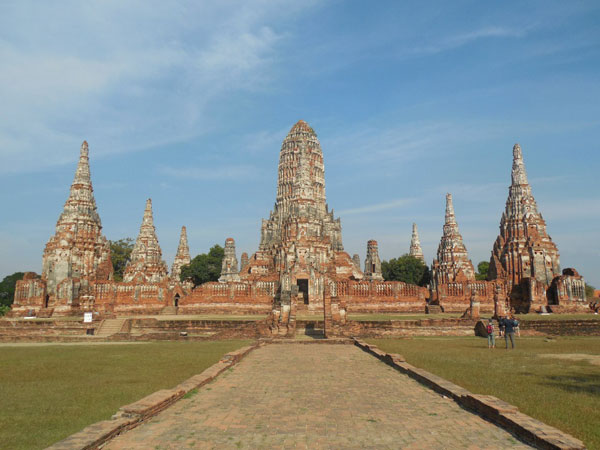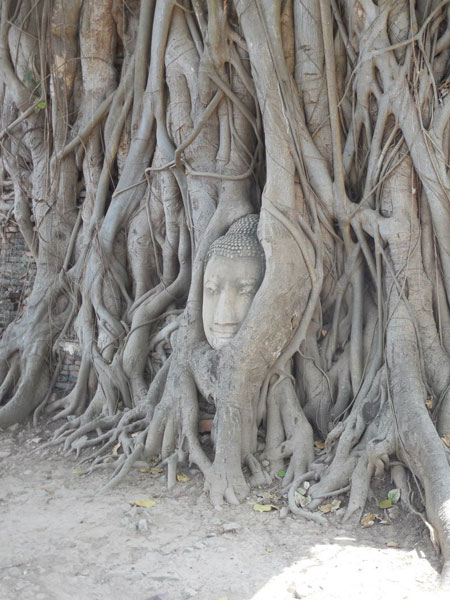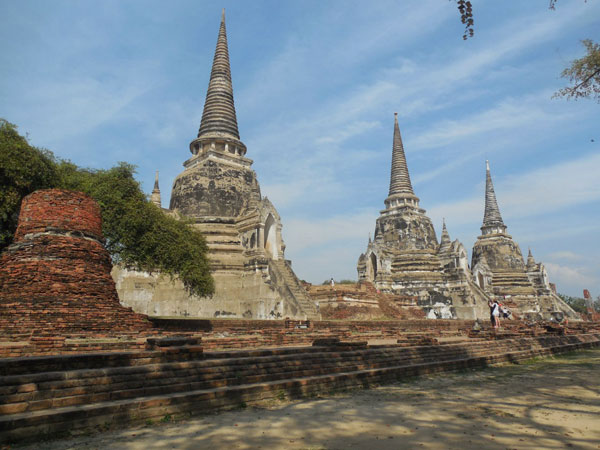Ayutthaya (/əˌjuːt.təˈjɑː/ ə-YOOT-tə-YAH; full name Phra Nakhon Si Ayutthaya, Thai: พระนครศรีอยุธยา, pronounced [pʰráʔ na.kʰɔ̄ːn sǐː ʔa.jút.tʰa.jāː]; also spelled "Ayudhya") is the former capital of Phra Nakhon Si Ayutthaya province in Thailand. Located in the valley of the Chao Phraya River, the city was founded in 1351[a] by King U Thong, who went there to escape a smallpox outbreak in Lop Buri and proclaimed it the capital of his kingdom, often referred to as the Ayutthaya kingdom or Siam. Ayutthaya became the second Siamese capital after Sukhothai.[1] It is estimated that Ayutthaya by the year 1600 CE had a population of about 300,000, with the population perhaps reaching 1,000,000 around 1700 CE, making it one of the world's largest cities at that time,[2] when it was sometimes known as the "Venice of the East".[3][4]
In 1767, the city was destroyed by the Burmese army, resulting in the collapse of the kingdom. The ruins of the old city are preserved in the Ayutthaya historical park,[5] which is recognised internationally as a UNESCO World Heritage Site. The ruins, characterised by the prang (reliquary towers) and gigantic monasteries, give an idea of the city's past splendour.[6] Modern Ayutthaya was refounded a few kilometres to the east.












